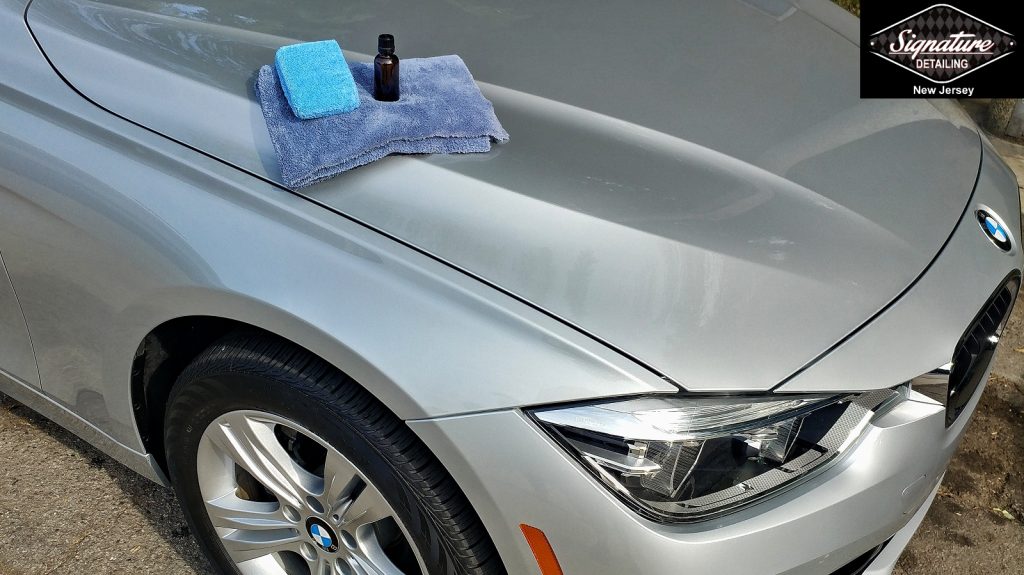Expert Methods Used in Ceramic Coating Philadelphia for a Perfect End up
Expert Methods Used in Ceramic Coating Philadelphia for a Perfect End up
Blog Article
Why Ceramic Layer Is the Ultimate Solution for a Perfect Complete
Ceramic layer has actually arised as a leading solution for those looking for a flawless surface for their cars, many thanks to its exceptional toughness and safety functions. What variables absolutely established ceramic coating apart?
What Is Ceramic Finishing?

When used properly, ceramic covering produces a hydrophobic surface area that wards off water and dirt, making it simpler to keep and clean up. Unlike standard waxes or sealers, which generally provide short-term security, ceramic layers can last for numerous years, relying on the item high quality and application method. The procedure of applying ceramic finish requires careful prep work, including comprehensive cleaning and sometimes paint adjustment, to guarantee ideal bonding and efficiency.
Ceramic finishes are not restricted to vehicle surface areas; they can additionally be made use of on different products, including glass, steel, and plastics, providing a flexible service for boosting protection. In general, ceramic covering stands for a considerable improvement in surface defense modern technology, integrating both aesthetic and useful benefits for a vast array of applications.
Benefits of Ceramic Coating
While many surface area defense choices exist, the benefits of ceramic coating stand out as a result of its unique properties and long-lasting performance. Among the key benefits is its remarkable sturdiness. Ceramic Coating Philadelphia. Unlike typical wax or sealers that need constant reapplication, ceramic finishes supply a durable layer that can last for a number of years, dramatically decreasing upkeep efforts
An additional noteworthy advantage is enhanced defense against ecological impurities. Ceramic layers produce a hydrophobic surface that wards off water, dirt, and numerous pollutants, making it simpler to cleanse. This function not only protects the lorry's look yet likewise reduces the danger of rust and oxidation, especially in severe weather.
In addition, ceramic coverings supply exceptional resistance to UV rays, preventing fading and destruction of paint gradually. This UV defense is essential for preserving the aesthetic value of cars and surface areas exposed to guide sunshine.
Furthermore, the glossy surface attained with ceramic layer improves the overall aesthetic charm, offering surface areas a showroom-quality luster. Generally, ceramic layers stand for a substantial improvement in surface area protection innovation, giving long-lasting benefits that cater to both practical and aesthetic demands.
How It Works
Comprehending the science behind ceramic finishes discloses exactly how they supply such remarkable protection and long life. At its core, a ceramic finishing is a liquid polymer that chemically bonds with the automobile's factory paint. This bonding develops a safety layer that is both oleophobic and hydrophobic, repelling water, dirt, and oil. The key part of most ceramic finishes is silicon dioxide (SiO2), which is stemmed from quartz. This compound contributes to the coating's hardness and resistance to scrapes, UV rays, and environmental impurities.
The application procedure involves several actions, including surface area preparation, which is vital to achieving optimal attachment. When applied, the covering goes through a healing procedure, throughout which it hardens and creates a semi-permanent bond with the paint surface area. This bond is what distinguishes ceramic finishings try here from typical waxes and sealers, providing a longer-lasting safety obstacle that can withstand for many years.
Furthermore, the density of the finishing can boost its protective qualities, making certain that it can withstand extreme problems. Ultimately, the science of ceramic layers integrates advanced products with ingenious application methods to supply an exceptional level of security and aesthetic enhancement for lorries.
Contrast With Conventional Techniques
The benefits of ceramic coatings become particularly apparent when contrasted to traditional paint defense approaches such as waxes and sealers. While waxes use a temporary luster, normally lasting a couple of weeks to a pair of months, ceramic coatings give a long-lasting protective layer that can endure for a number of years. This durability considerably decreases the regularity of reapplication, making ceramic coatings a much more affordable service gradually.
Furthermore, conventional methods often require extensive prep work and several applications to accomplish a satisfying degree of security. On the other hand, ceramic coatings bond at a molecular level blog with the car's surface, producing a robust shield versus environmental contaminants like UV rays, acid rainfall, and road salts. This bond enhances the lorry's resistance to scratches and swirl marks, which prevail with typical waxes and sealants.
Furthermore, the hydrophobic properties of ceramic finishes drive away water and dust, leading to much easier cleansing and maintenance. In contrast, wax and sealant-treated surface areas can attract gunk, necessitating even more regular washing - Ceramic Coating Philadelphia. Overall, ceramic finishes not only provide premium security but also provide a much more visually enticing and enduring surface, establishing them as the recommended option for critical automobile owners
Application and Maintenance Tips

Using a foam applicator, use the finish in tiny sections, complying with the producer's standards pertaining to thickness and overlap. Permit adequate curing time in between layers, normally 24 hr, to ensure correct bonding. After application, it is vital to prevent exposure to water or harsh aspects for at least a week to allow the layer to completely cure.
For upkeep, wash the car regularly with pH-balanced soaps and avoid abrasive products. Touchless cars and truck washes are advised to minimize scraping. Additionally, utilizing a ceramic upkeep spray can boost the coating's hydrophobic properties and long life. Normal evaluations for any kind of indications of wear will certainly aid preserve the covering's stability and protect that excellent surface.
Final Thought
In verdict, ceramic layer arises as a superior alternative for accomplishing a flawless auto finish. By creating a robust bond with manufacturing facility paint, Recommended Reading ceramic coating successfully shields versus scrapes, UV rays, and ecological contaminants.

Report this page